BER/BERAC
-
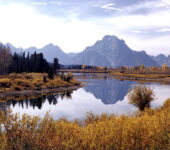
Headwaters of Snake River
Headwaters of Snake River.
-
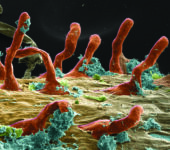
Magnified Pine Root and Microbiome
Magnified view of a red pine (Pinus resinosa) root and associated microbiome.
-
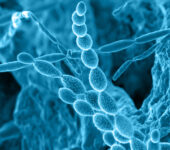
Microbes in Pine Rhizosphere
Soils are vital to our future supply of water and food, but they also play a critical role in adapting to climate change and sustaining the planet’s biosphere—the land, sea and atmosphere occupied by living things. With funding from the Laboratory Directed Research and Development program, Pacific Northwest National Laboratory researchers studied microbes from the typical rhizosphere found in the Northwest’s Central Cascades pine forests to better understand how microbes help stabilize carbon in soils. The rhizosphere is the small area surrounding plant roots where microbes interact with minerals in the soil—a hot spot for biogeochemical activity that is constantly changing. Microbes in the rhizosphere play a very important role in soil processes like mineral weathering and the transformation of soil organic matter.
Research Team: Alice Dohnalkova, Rosey Chu, Malak Tfaily, Alex Crump, Tamas Varga, Colin Brislawn and William Chrisler (PNNL).
This image was captured with the Helium Ion microscope in EMSL, the Environmental Molecular Sciences Laboratory, a DOE national user facility at PNNL.
-
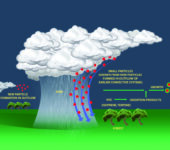
New Particle Formation
New particles form in the outflow region of earlier convective clouds, leading to high concentrations of small particles in the free troposphere. These small particles are injected into the boundary layer by the downward motions in the convective system, where they interact with volatile organic compounds (VOCs) and other gases emitted by vegetation from the Earth’s surface to grow and become cloud condensation nuclei.
-
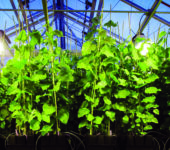
Poplar Genome-Wide Association Study
Largest-Ever Dataset of Genetic Variations in Poplar Trees. The BioEnergy Science Center (BESC) genome-wide association study dataset comprises more than 28 million single-nucleotide polymorphisms, or SNPs, derived from approximately 900 resequenced poplar genotypes. The information is proving useful to researchers in the fields of biofuels, materials science, and secondary plant metabolism.
-
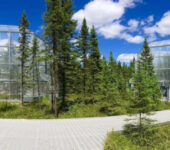
Spruce and Peatland Responses Under Changing Environments
The Spruce and Peatland Responses Under Changing Environments (SPRUCE) research site located in northern Minnesota. The SPRUCE site is part of the Terrestrial Ecosystem Science Science Focus Area.
-
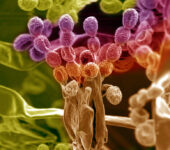
Studying the Rhizosphere
Scientists at Pacific Northwest National Laboratory study the microbial interactions in the plant root systems, the rhizosphere. The rhizosphere represents a critical zone where plant roots, microbes and minerals interface, and where biogeochemical weathering provides nutrients to plants. This research program will broaden understanding of the biogeochemistry of plant-microbe-soil interactions. Shown are the spores of an opportunistic soil fungus Penicillium sp. that associates with the plant roots, microbial biofilms and soil minerals.
-

Terrestrial Ecology Landscape
Collaborating Across Environmental Science Domains. Terrestrial Ecology, Watershed Sciences, and Coastal Systems make up the three domains of the BER Environmental System Science program.
-

Watershed Landscape
Collaborating Across Environmental Science Domains. Terrestrial Ecology, Watershed Sciences, and Coastal Systems make up the three domains of the BER Environmental System Science program.
-
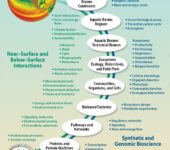
Scales of BER and ESS Research
Molecular Science Challenges in Biological and Environmental Research. The Department of Energy’s (DOE) Biological and Environmental Research program (BER) supports research that spans an enormous breadth of spatial and temporal scales in the biological, climate, and environmental sciences. Fundamental molecular process research underpins an understanding of larger-scale phenomena of interest to BER and DOE.